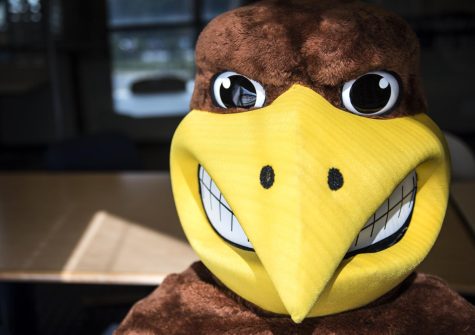Professor pushes for Rubik’s Cube solution
August 26, 2010
Kent State professor Morley Davidson takes part in a team that discovered the lowest possible moves to solve a Rubik’s cube.
There are 43,252,003,274,489,856,000 — that’s 43 billion, billion — positions on a Rubik’s Cube.
Morley Davidson, an associate professor of Mathematical Sciences, was a member of the research team that set out to discover the fewest number of those needed to solve the cube, known as “God’s number.”
Their finding? A Rubik’s Cube can be solved in 20 moves or less from any position.
“This is very good work for this outstanding problem,” said John Neuzil, an associate professor of Mathematical Sciences. “Researchers have been working on this for 20 years and it’s a very good mathematical result.”
Davidson said the cube went from toy to legitimate mathematical problem since its introduction in 1974.
“The Rubik’s Cube was a big icon in the ‘80s. I was in middle school when it came out. Everybody had one,” Davidson said.
Davidson joined the team of Thomas Rokicki, the leader of the project, Herbert Kociemba, a math teacher in Germany and John Dethridge, a programmer with Google, to help solve the puzzle.
“I was working on a different Rubik’s Cube research project when I began talking to these other men,” Davidson said. “Then I was invited to help the team.”
The team broke up that 43 billion billions into 2.2 billion smaller problems, each comprised of about 19.5 billion positions. Then they used “mathematical tricks” to solve 55 million problems out of the 2.2 billion.
After all of the computations were completed, the team concluded that “God’s number” is 20. But Davidson said the majority of solutions were solved in 17 to 18 moves.
“We used a lot of computers at Google to complete the computation in a few weeks,” Davidson said.
He said the program they wrote for the computers could solve a single set in about 20 seconds and took a few weeks to solve the 55 million sets. It would take 35 years for a basic computer to work out all of the solutions.
He said that’s been the biggest problem when dealing with the Rubik’s Cube.
“Millions of cubing aficionados have been trying to figure it out for years,” Davidson said. “Since 1980, we have slowly gotten closer to the answer.”
Facts about Rubik’s cubes
– Ern? Rubic, of Budapest, Hungary, invented his cube in 1974 as a way to teach three-dimensional geometry.
– He patented it as the “Magic Cube” in 1974. By 1977, it hit Hungarian toyshops and three years later began selling all over the world under a new name: Rubik’s Cube.
– Out of 43 quintillion configurations of the cube, “God’s number” is what mathematicians call the fewest number of moves necessary to solve the cube from any position.
– The fastest Rubik’s Cube solution was completed in 7.08 seconds.
– Now there’s an iPhone app and international “speedcubing” competitions.
Source: www.rubiks.com
Contact Kyle Hovest [email protected].























